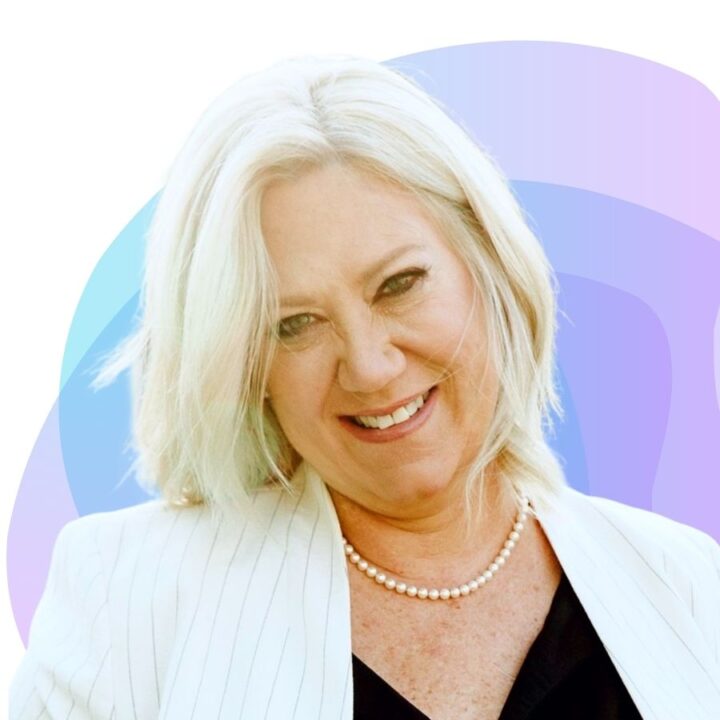
Five Steps to Integrating Coaching into your Talent and Leadership Development Strategies
today2022.03.29. 3129 4


Renee Robertson PCC, SHRM- SCP, Founding Executive for the International Coaching Federation’s Coaching in Organizations
WHY SHOULD YOU CARE?
It is more difficult than ever to adapt to our ever-changing world. As we are facing new challenges every day both in our personal and professional lives, integrating coaching into the organizations’ strategy is essential to keep up, develop the workforce and achieve high-performance.
A global pandemic has disrupted the world, organizations, and each of us – imposing rapid change and a need to adapt. The rise of technology has accelerated the pace of change, the way we work, manage, lead, and interact with others. Despite these massive changes, each of us remain human. For those of us working in organizations, managing teams, and leading teams of teams, our ability to adapt and lead with courage, compassion and empathy is imperative.
Notwithstanding these changes, we are responsible to deliver positive business outcomes, create engaging, productive, and high-performing teams and work cultures. The new way of working and leading is here. Those that can adapt will thrive, those that cannot become extinct. This is exactly why coaching has become a required leadership and talent development strategy and must have for organizations to be successful in the new way of work.
Coaching Defined:
The International Coaching Federation defines coaching as “partnering with clients in a thought-provoking and creative process that inspires them to maximize their personal and professional potential.
The European Mentoring and Coaching Council defines coaching as “an art: that of helping a person or a group to develop and enhance their professional, relational, and personal potential in the realization of their projects and to take their rightful place in the relationship they have with themselves, others, and their environment.
Now, both definitions focus on the development of the individual or group to reach their potential and realize success as defined by them or in relation to certain goals.
Coaching and Employee Engagement:
Gallup conducted nine meta-analyses of the relationship between team engagement and performance over the past two decades. The most recent study included more than 82,000 teams in 230 organizations — and 1.8 million employees — across 49 industries and in 73 different countries. The study found that team members with higher levels of engagement:
- Produce substantially better outcomes
- Treat customers better and attract new customers also
- Are more likely to stay with their organization than those that are less engaged
- Engaged employees are also healthier and less likely to experience burnout.
This research indicates that changes in employee engagement are best attributed to changes in how organizations develop employees. Specifically,
- High-Development Cultures – are initiated and driven by the CEO and Board. Their organizations have a well-defined purpose and employee engagement is critical to the unity of its purpose and brand. Leaders explicitly connect engagement to their business opportunities. As a result, engagement is relevant to everyday work. Top executives model the behavior and lead the way.
- The transition from “boss” to “coach” – leaders who encourage their teams to develop their problem solving and critical thinking capabilities, become more empowered, and take ownership and pride in their contribution. Managers that embrace a coaching mindset and behave more like a coach VS a manager, have greater success.
- Accountability Culture – Recognition of outstanding performance sends a strong message about what the company values. Tolerance of mediocrity does not exist in the best organizations.
The best organizations know there is no meaningful mission or purpose in the absence of clear expectations, ongoing conversations, and accountability. These are also organizations that incorporate coaching into their culture.

Steps to Integrate Coaching:
- Create Awareness and Educate: Coaching is about learning and development. Educate yourself and your leadership about coaching. What it is and what it isn’t. Engage leaders and explore their knowledge and experiences with coaching. Speak with colleagues to secure their perspectives on coaching too. Assess their willingness to participate in and support coaching initiatives.
- Identify Coaches, Participants, and Executive Sponsors:
- Identify leaders that are committed to a development mindset and model coachlike behaviors. Request their sponsorship and their support to identify coaching program participants and marketing efforts.
- Select senior leaders to be coached by external executive coaches. Review your succession and replacement. Participants should be excited to be part of the program and willing to make a commitment.
- Select Executive Coaches (internal or external). Develop selection criteria to pre-identify candidates with the desired qualities, experiences and training required to work with your leaders. Ask other business professionals for referrals or submit a request via the ICF’S Coach Finder https://coachingfederation.org/find-a-coach.
- Manage Expectations: Be sure to clearly set expectations with your coaches, individuals being coached, the executive sponsors and, of course, your manager and colleagues. It is best to run the initial program as a pilot and build upon its success. Make certain everyone is clear on the goals of the program, time commitment and their roles and responsibilities.
- Train on Coaching Mindset and Skills: Teach coaching mindset and skills to all managers of people. Incorporate coaching into your performance, development and training programs and processes.
- Measure Success: Prior to starting the program, determine how you will measure its success. Consider a simple Net–Promoter survey, impact study and/or interview/survey program participants on their perception of the benefits of being coached. In addition, ask managers of the program’s participants about the changes they may have noticed in their employee’s behaviors after being coached.
In a time where we’re surrounded by change and have many demands on our personal and professional lives, the need for coaching is at an all-time high. Coaching is a model for engagement, empowerment, and accountability. It teaches those being coached to embrace their potential, be responsible, and to be accountable for their results. Integrating coaching into your organization’s DNA is deciding to invest in the development of your workforce, replace mediocrity with high performance and create lasting and sustainable change.
Renée Robertson, PCC, SHRM- SCP, Founding Executive for the International Coaching Federation’s Coaching in Organizations, two-time International Coach Federation Prism Award Winner and award-winning author of The Coaching Solution: How to Drive Talent Development, Organization. Renée is also a serial entrepreneur and founder of The Robertson Coaching Institute, Trilogy Development, The Robertson Group, LLC multi-franchise owner in the wellness industry.
The ICF is the world’s largest organization for the global advancement of the coaching profession and fostering coaching’s role as an integral part of a thriving society. Founded in 1995, its 50,000-plus members located in more than 140 countries and territories work toward the common goals of enhancing awareness of coaching and upholding the integrity of the profession through lifelong learning and the highest ethical standards. Through the work of its six unique family organizations, ICF empowers professional coaches, coaching clients, organizations, communities, and the world through coaching. Visit coachingfederation.org for more information.
Written by: Renee Robertson
Coaching Future of Work HR Strategy Talent Management. Leadership
Previous post

- 3033
labelArticles today2022.03.29.
How HR can assist to deal with emotional trauma during times of crises
Farai Mugabe, Content & Research, The HR Congress WHY SHOULD YOU CARE?About 977 civilians have been killed, almost 1600 have been injured in Ukraine because of the war as per [...]
Similar posts

labelArticles today2024.07.24.
AI-Powered HR: Strategic Benefits and Practical Applications

labelArticles today2024.06.24.








Post comments (0)